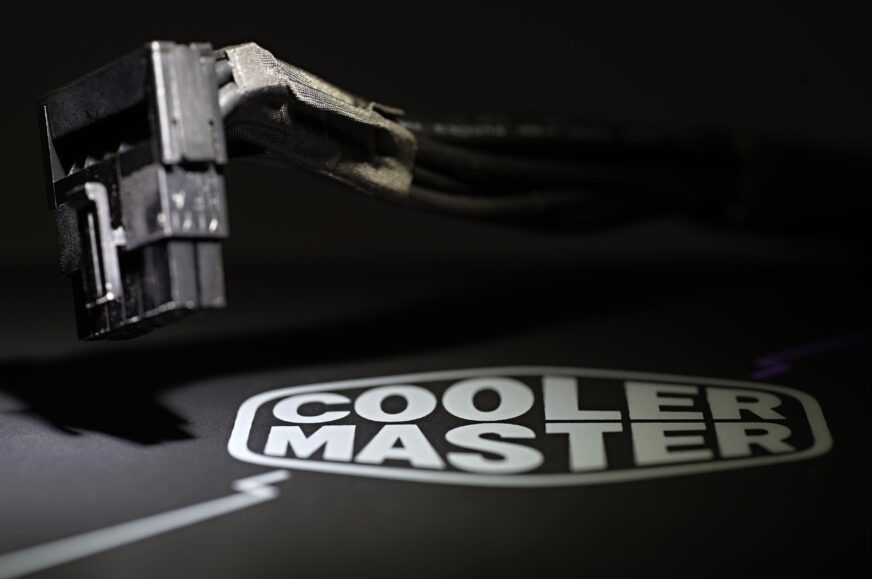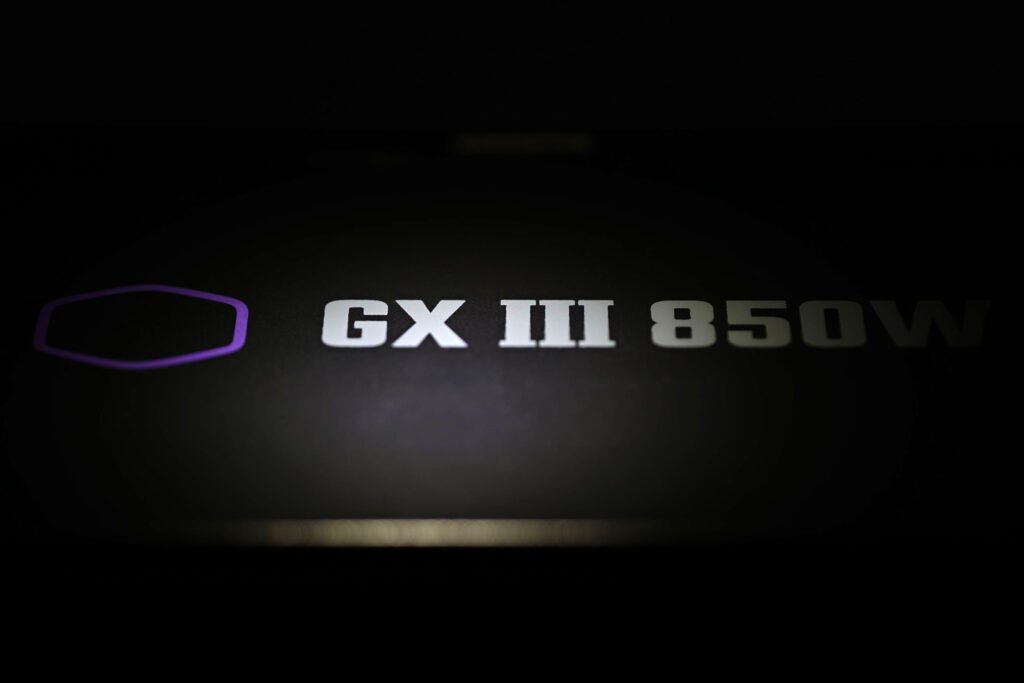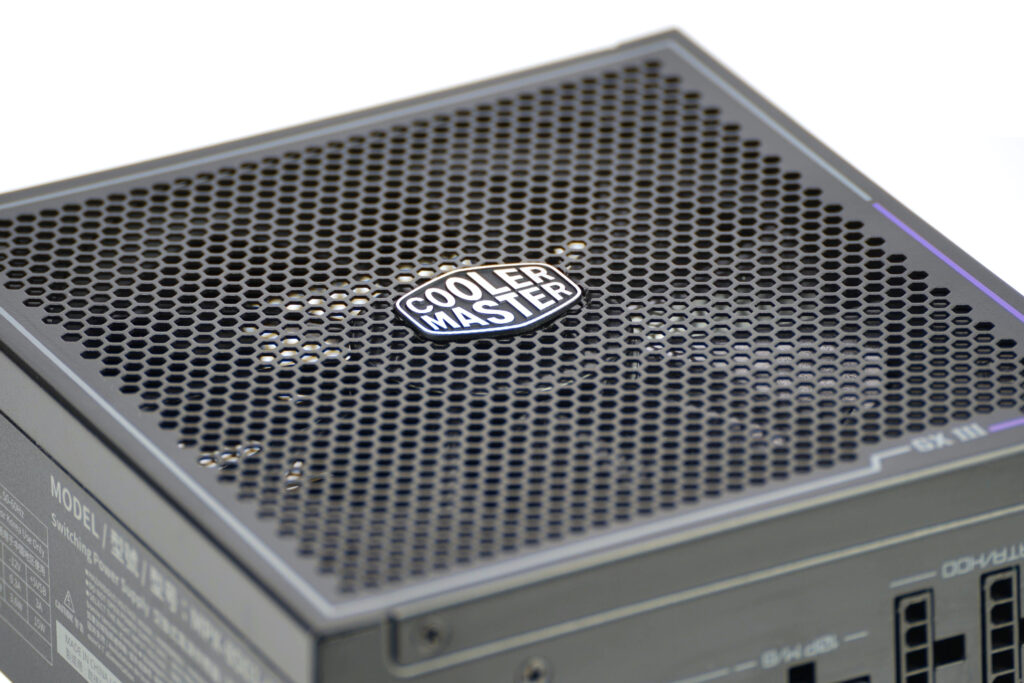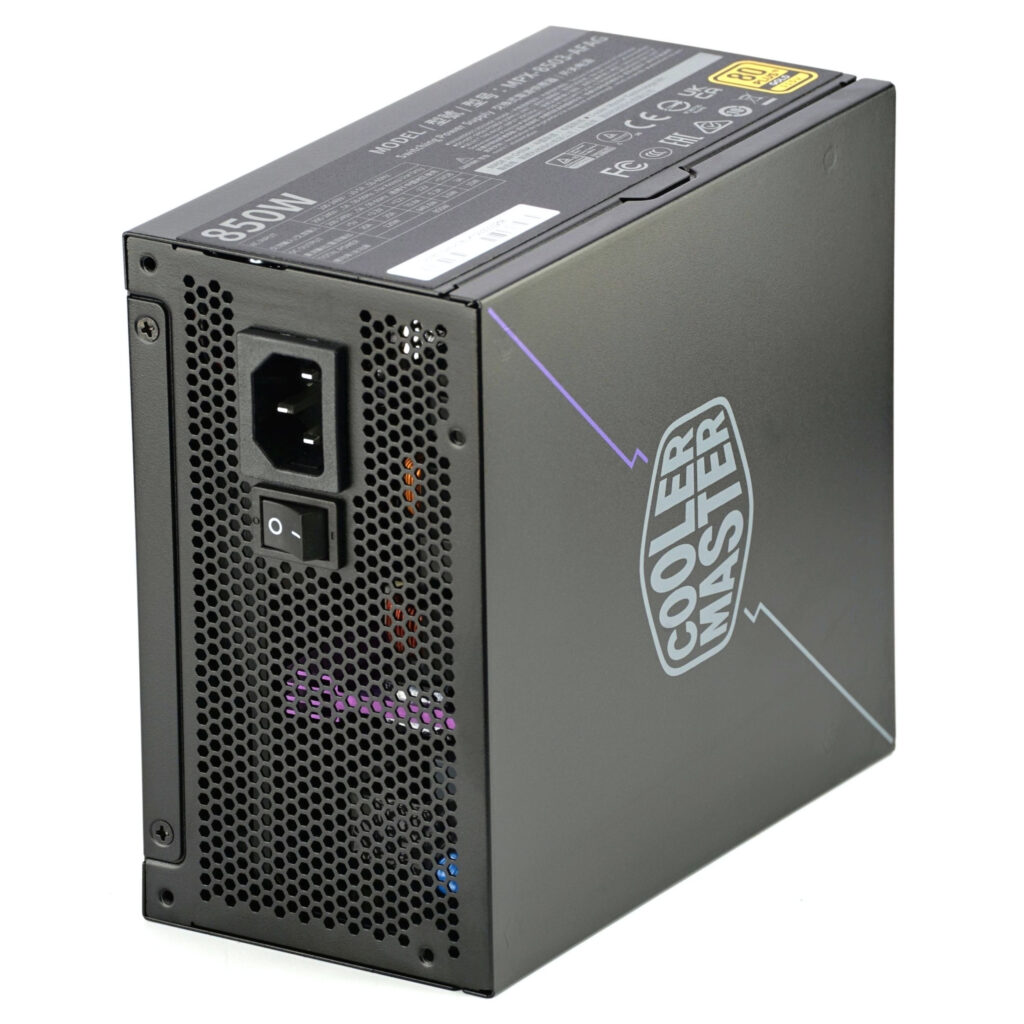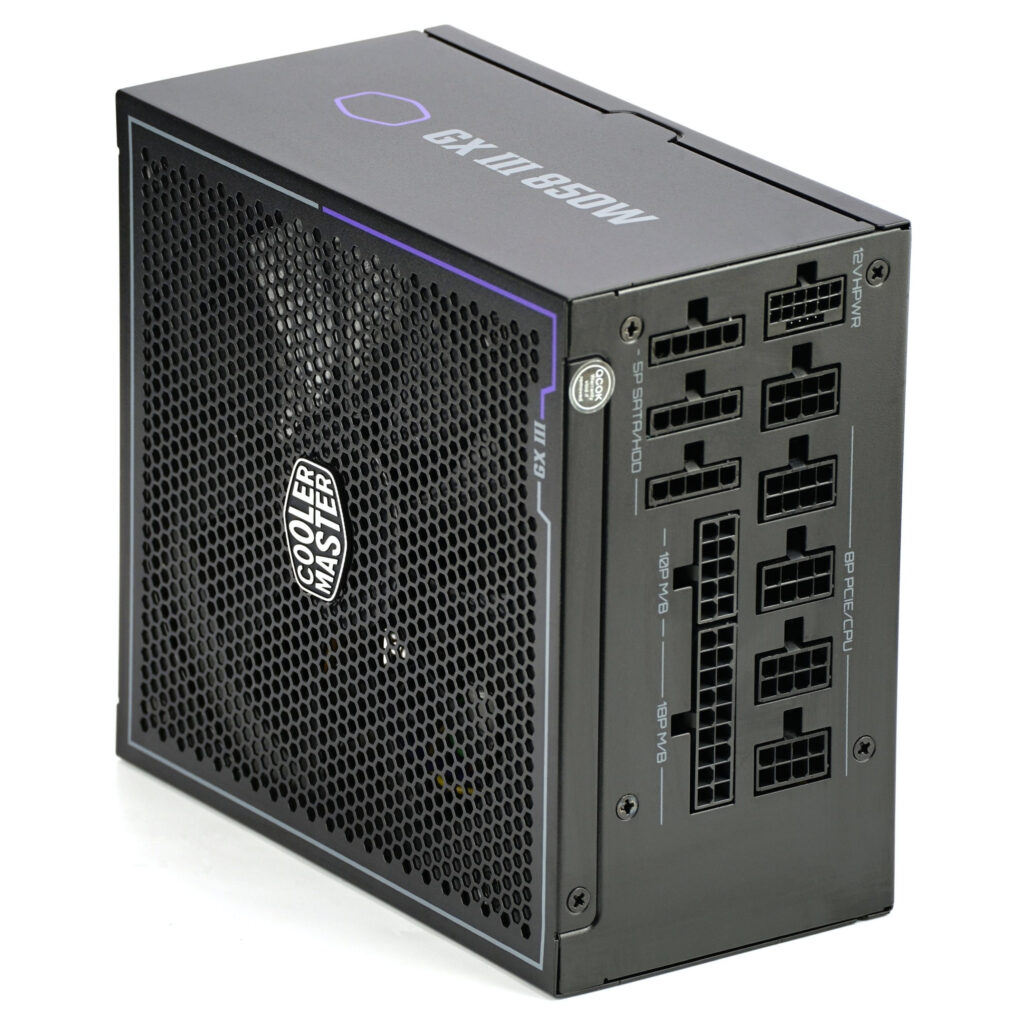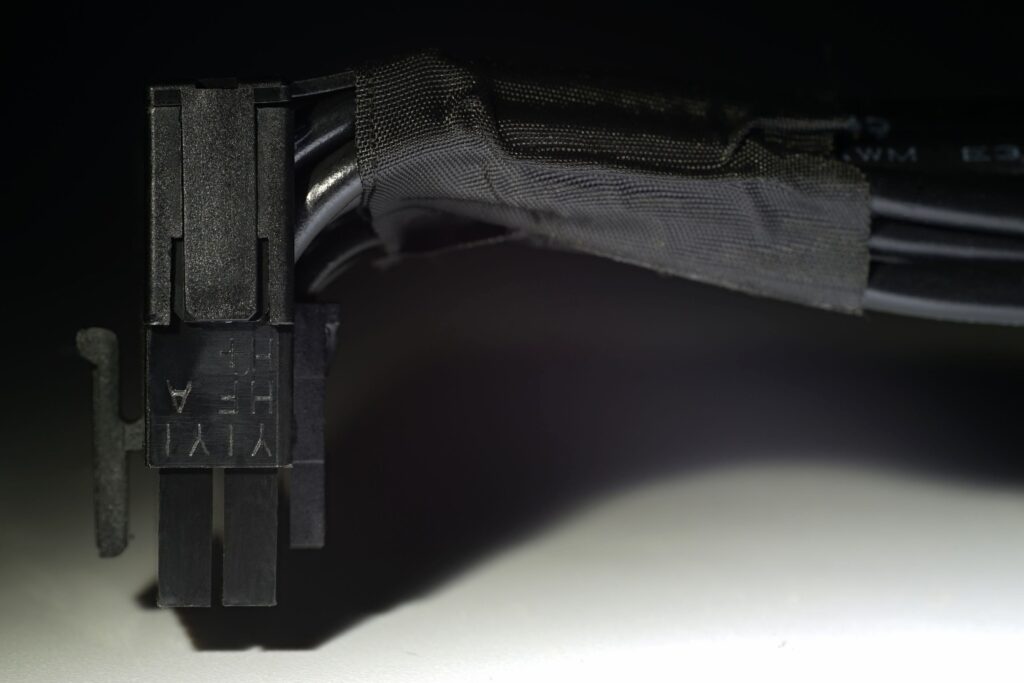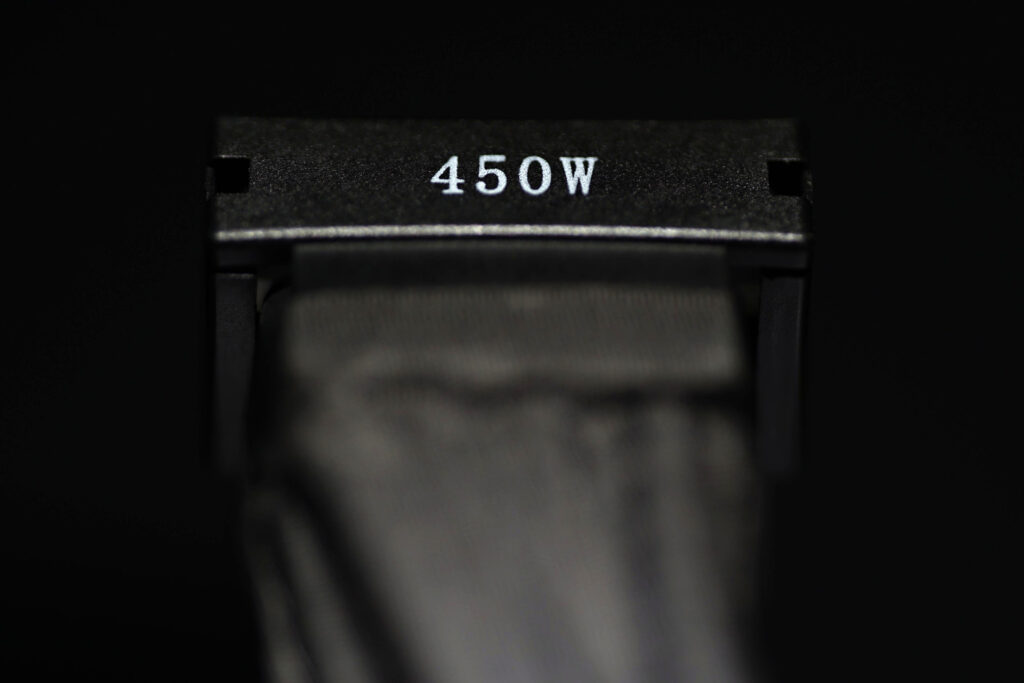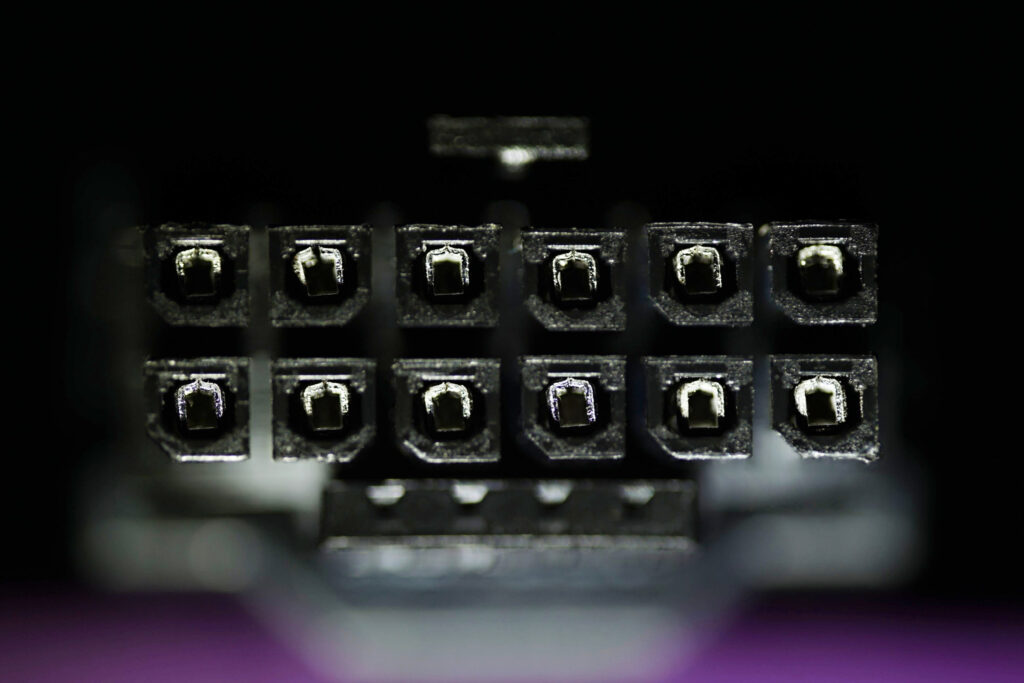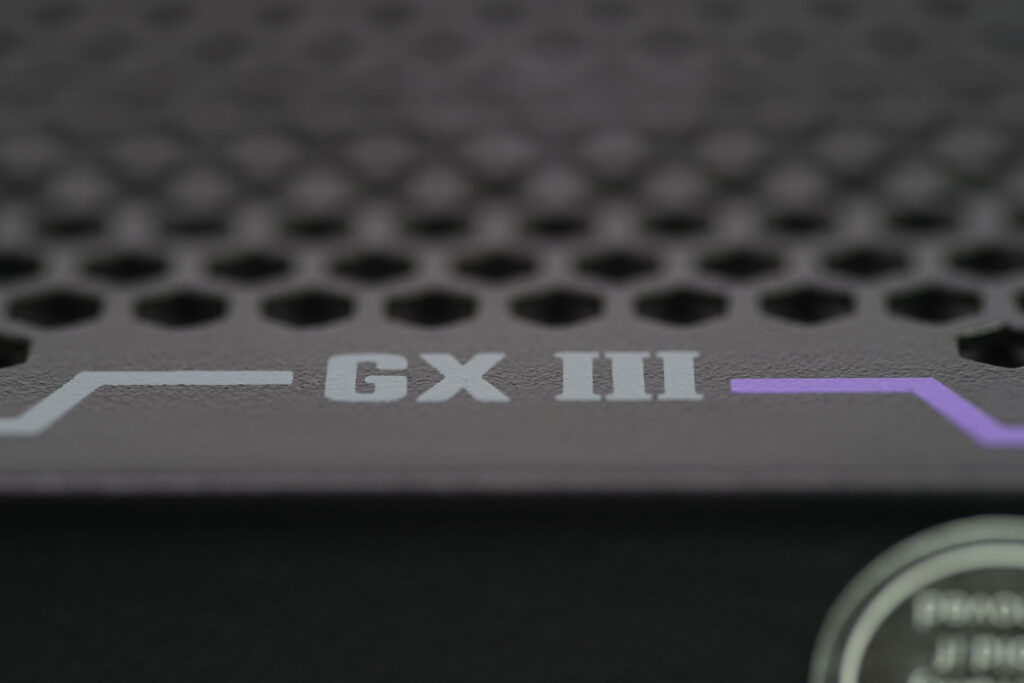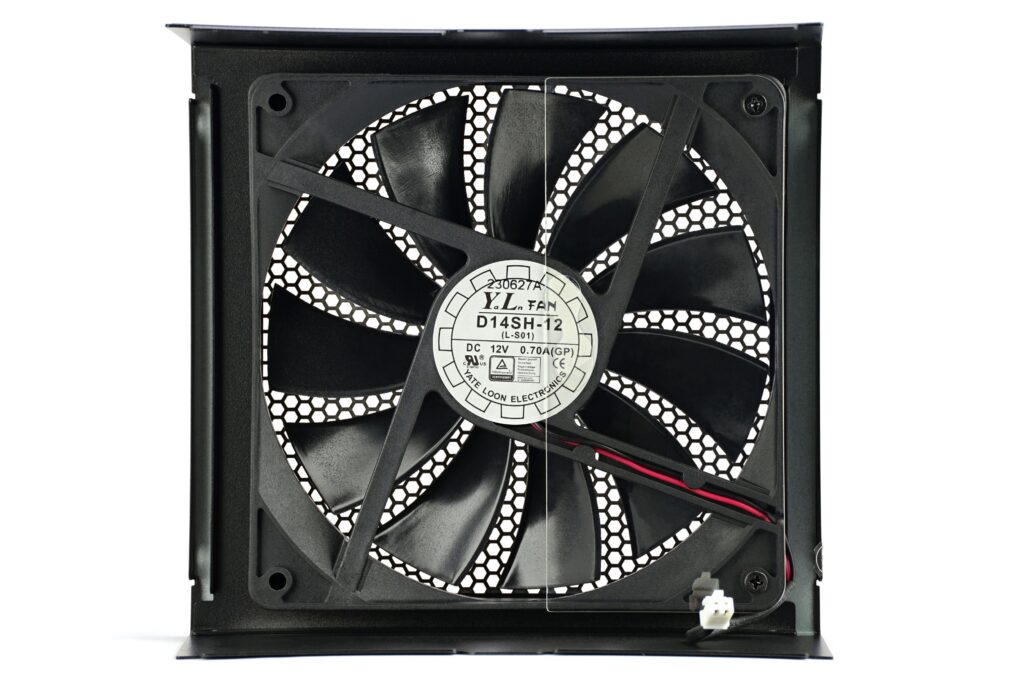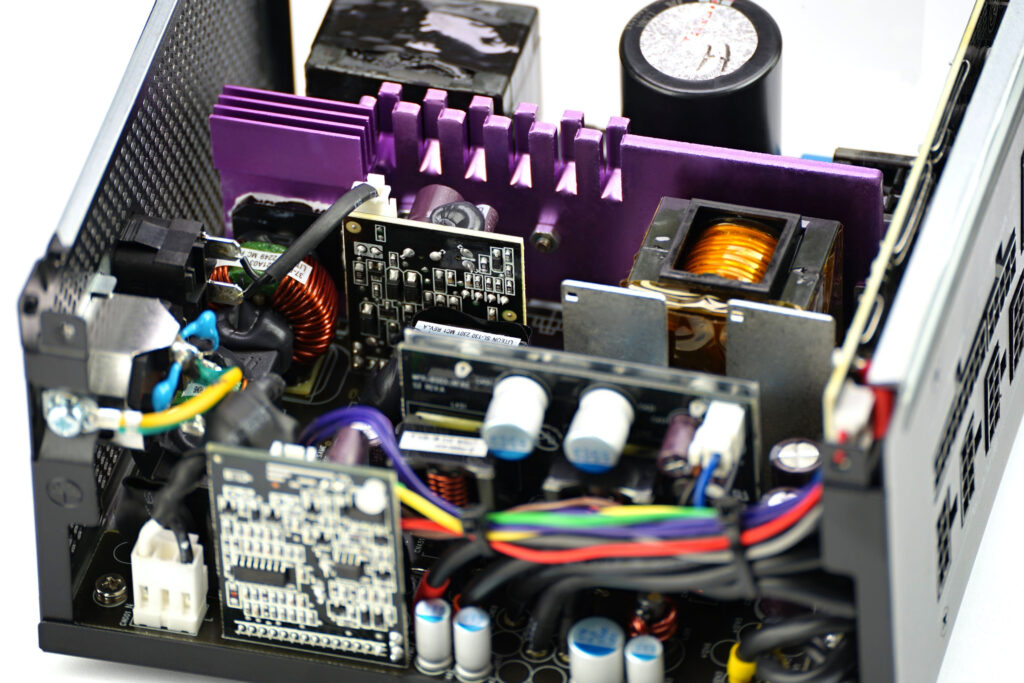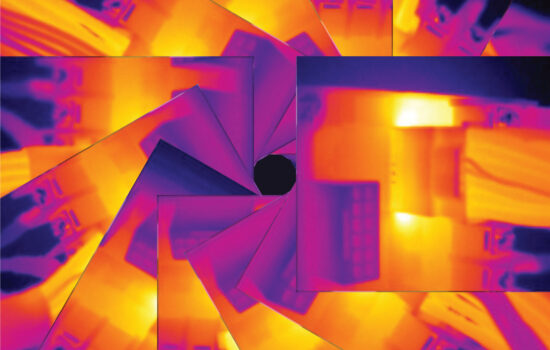The Cooler Master GX III Gold 850 PSU (850 W)
The GX III Gold 850 PSU is in a number of design aspects different than what might be described as a typical ATX 3.0 model. One of the aspects is the significantly different approach to cable design with the 12VHPWR connector for external graphics card power. The wires behind the connector are unconventionally bent at right angle for the sake of maximum robustness. But this power supply represents more than one way of looking at things.
From the outside…
Cooler Master concentrates the best of its ATX 3.0 power supply range in the GX III Gold series, although with regard to parameters and price we can talk about mid-range.
With the grille in front of the fan, these PSUs are somewhat reminiscent of the Asus ROG Strix 850G. The perforation consists of extra small hexagonal cut-outs, but the wall between them is a bit thicker (and thus the grille itself is a bit sturdier). In any case, the open area in front of the fan is quite large here too, so the fan has enough room to draw air from.
In length, the power supply is the average 160 mm long, which balances between still decent compatibility (with cases) and space for components. That’s including the fan size. Of buttons, only the power switch is on the power supply, but the absence (via a separate button) of an optional hybrid fan mode doesn’t mean that the power supply, like the BeQuiet! models (including the Dark Power 13), doesn’t support passive operation. It does. Except that it cannot be deactivated and according to the Cooler Master graph, the fan only switches on when the load exceeds 40%. And then, as part of a certain hysteresis, it switches off at 50% load when the load is reduced. The minimum fan speed (stagnant according to CM up to 70% power supply load) is supposed to be around 1350 rpm once it settles down.
If there is anything that clearly sets the CM GX III Gold apart from the other power supplies we will be testing, it is the design of the 16-pin PCIe connector. Its back is made to hold the wires tightly against the hollows (and pins) at right angles. This should avoid excessive stress on the contacts, which with straight cables is caused by the lever, or the degree of bending of the wires. The latter is also determined by cases themselves, where the cable often pushes into the side panel, which will not happen in this case unless the case is at the limit of compatibility, where it would come into collision/physical contact with the housing of the connector itself. Such a design is thus intended to reduce the mechanical load on the connector itself and prevent possible complications.
Despite the fact that the 12VHPWR connector and the overall cable look very good, sturdy, the number “450 W” is printed on the connector. This refers to maximum load capability, but that shouldn’t necessarily mean graphics cards like the RTX 4090 when overclocked (and exceeding 450W/37.5A) are necessarily beyond the capabilities of this solution.
As with the “600 W” cables, the conductors are 1.31 mm2 in cross-section, and it appears that tight hollows with a large contact area are used as well, so the transient resistance and the temperature increase associated with it might not be higher, but for some reason it’s written that way. We’ll leave that to be explained, and if we get to the technical details from CM development, we’ll be sure to post them later in the test article.
The continuous current load on the 12-volt rail is specified at 70.8A, which is plenty for the RTX 4090 even when combined with a very power-hungry Intel Core i9-14900K processor. And that’s even under a combined non-gaming load. But the question naturally is how much efficiency matters.
In gaming PCs, however, you should hit the top 50–60% efficiency range regardless of the processor used with, say, the RX 7900 XTX, AMD’s most powerful Radeons. For those, this performance variant of the GX III Gold (with 850 W) has exactly three 6+2-pin PCI Express connectors.
… and from the inside
The fan is the Yate Loon D14SH-12 (L-S01), which unlike the D14SH-12 (L-SSS) does not have a 140mm form factor, but only 135mm. But the half a number smaller variant has four more blades with smaller inter-blades gaps, so it should achieve at least higher static pressure at comparable speeds. And the L-S01 variant is also significantly slower at 12V (1800 vs. 2800 rpm), so even at maximum power output the cooling will not be extremely noisy. The bearings are of the ball type, with the promise of longer service life, at least at this price level of fans around, 5 EUR.
It is also worth mentioning that the fan is not screwed onto the grille, but to the bracket of the second part of the power supply housing. Apart from the aesthetic aspect (the front side is not “defaced” by screw heads), such a solution is also useful for service purposes. It doesn’t happen that the disassembly is complicated by the cable between the fan grille and the PCB. If necessary, you can disconnect it only after putting the grille aside.
The aluminium heatsink on the voltage transformers is quite large and also anodized purple. You can see that Cooler Master took care to capture its color scheme in some way in these places as well. And can you see inside through the grille? Yes, you can.
On the primary side, similar to the FSP Hydro G Pro ATX 3.0 power supply, there is only one large capacitor – a 450 V Toshin Kogyo model with LGWA series with 680 µF capacity. And the secondary is also equipped with TK capacitors.
| Brand and model of the PSU | Basic parameters from the manufacturer | Price [eur] | ||||||||||
| Power output [W] | Continuous current load [A] | 80 Plus | Connectors | AWG | ||||||||
| +12 V | +5 V | +3.3 V | 16-pin * | 6+2-pin * | 8/4+4-pin | SATA | 4-pin Molex | |||||
| Cooler Master GX III Gold 850 | 850 | 70.8 | 20.0 | 20.0 | Gold | 1+0× | 3+0× | 2× | 8× | 4× | 18–16 | 170 |
| FSP Hydro G Pro ATX3.0 | 850 | 70.8 | 20.0 | 20.0 | Gold | 1+0× | 3+0× | 2× | 10× | 3× | 18–16 | 150 |
| Chieftec Polaris 3.0 (PPS-850FC) | 850 | 70.8 | 22.0 | 22.0 | Gold | 1+0× | 2+0× | 2× | 12× | 4× | 18–16 | 152 |
| Asus ROG Strix 850G Aura | 850 | 70.8 | 22.0 | 22.0 | Gold | 1+0× | 1+2× | 2× | 5× | 4× | 18–16 | 208 |
| Seasonic Vertex GX-850 | 850 | 70.0 | 20.0 | 20.0 | Gold | 1+0× | 3+0× | 2× | 8× | 3× | 18–16 | 200 |
| Enermax ERT850 EWT | 850 | 70.5 | 20.0 | 20.0 | Gold | 1+1× | 4+0× | 2× | 12× | 6× | 18–16 | 160 |
| BeQuiet! Dark Power 13 | 850 | 70.0 | 24.0 | 24.0 | Titanium | 1+0× | 4+0× | 2× | 12× | 3× | N/A | 250 |
| DeepCool PX1000G | 1000 | 83.3 | 22.0 | 22.0 | Gold | 1+0× | 3+0× | 2× | 7× | 4× | 18–16 | 180 |
| MSI MPG A850G | 850 | 70.8 | 22.0 | 22.0 | Gold | 1+0× | 4+2× | 2× | 7× | 4× | 18–16 | 169 |
* The number of PCI Express connectors is given as the sum of native and shared connectors (the second number after the “+” sign). Native connectors are those that are the same on both sides. Shared ones are then connected via different connectors on the power supply side, for example, a single 300-watt 16-pin (12VHPWR) is created by using two 6+2-pin connectors, and vice versa – a 16-pin connector can be used to connect a cable with two 6+2-pin connectors.
English translation and edit by Jozef Dudáš





